In an era of increasing environmental awareness and a growing need to nurture the next generation of eco-conscious citizens, the fusion of education and sustainability has never been more critical. The world of school architecture is undergoing a remarkable transformation, shifting towards designs that not only accommodate students but also integrate the principles of sustainability seamlessly. Welcome to the era of “Living Learning Spaces,” where school buildings are no longer just structures; they are vibrant ecosystems of education and sustainability. This article explores how sustainable school architecture is shaping the future of education.
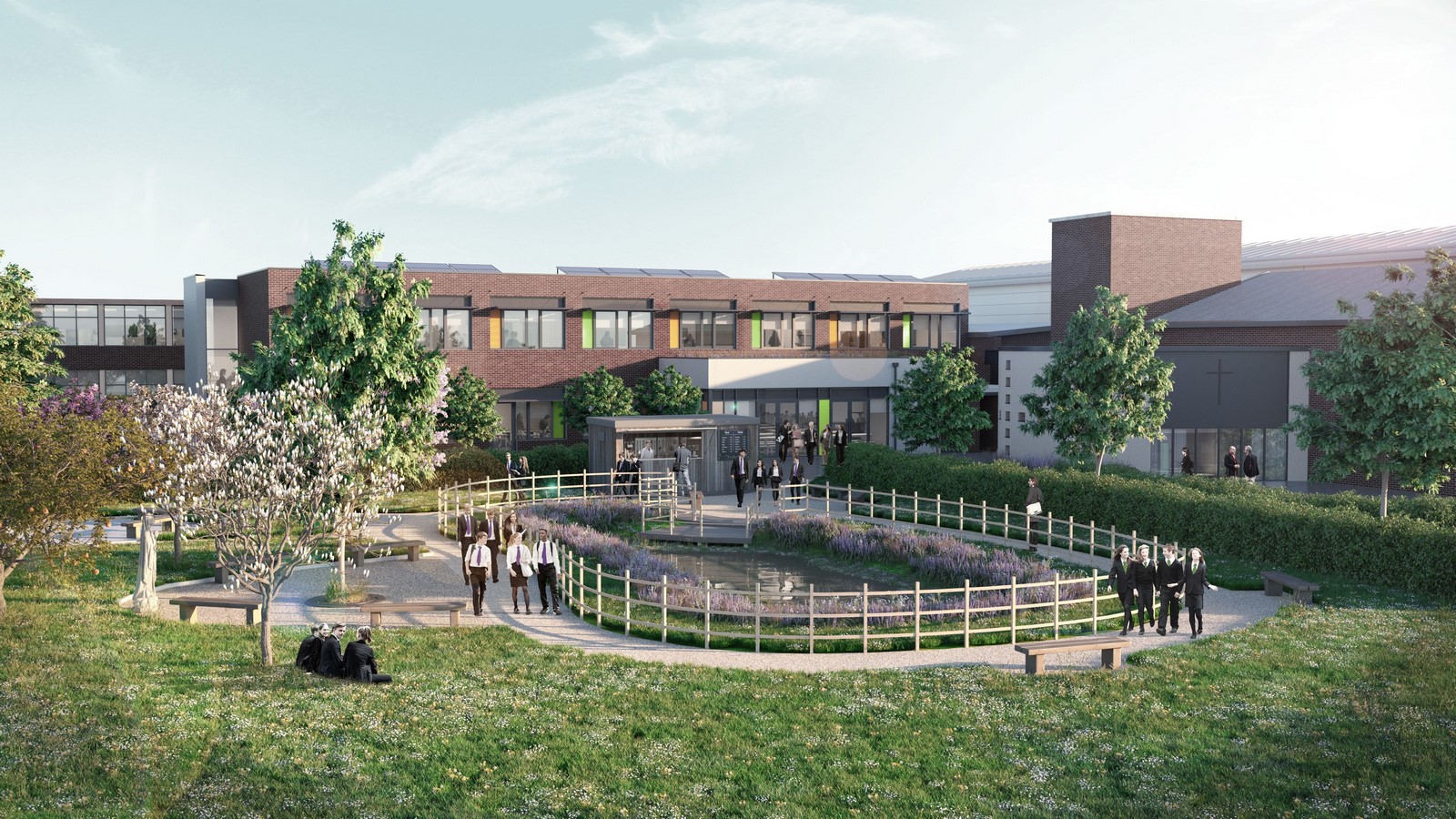
Biophilic Spaces: Connecting with Nature
Biophilic spaces enhance sustainability in school architecture by creating immersive environments where students learn through direct engagement with nature.
These spaces function as living classrooms, where lessons on biodiversity, ecosystem dynamics, and environmental stewardship come to life. Through hands-on experiences like caring for indoor gardens or observing local wildlife in designated areas, students gain a profound understanding of the natural world, fostering a lifelong commitment to sustainability.
Biophilic spaces inspire eco-consciousness and provide tangible examples of sustainable practices, contributing to a holistic education that goes beyond textbooks and traditional classrooms.
Biophilic design contributes to the broader sustainability goals of school architecture by seamlessly integrating ecological principles into the built environment. Biophilic elements, such as abundant natural light, indoor greenery, and views of nature, enhance the energy efficiency and well-being of the school community
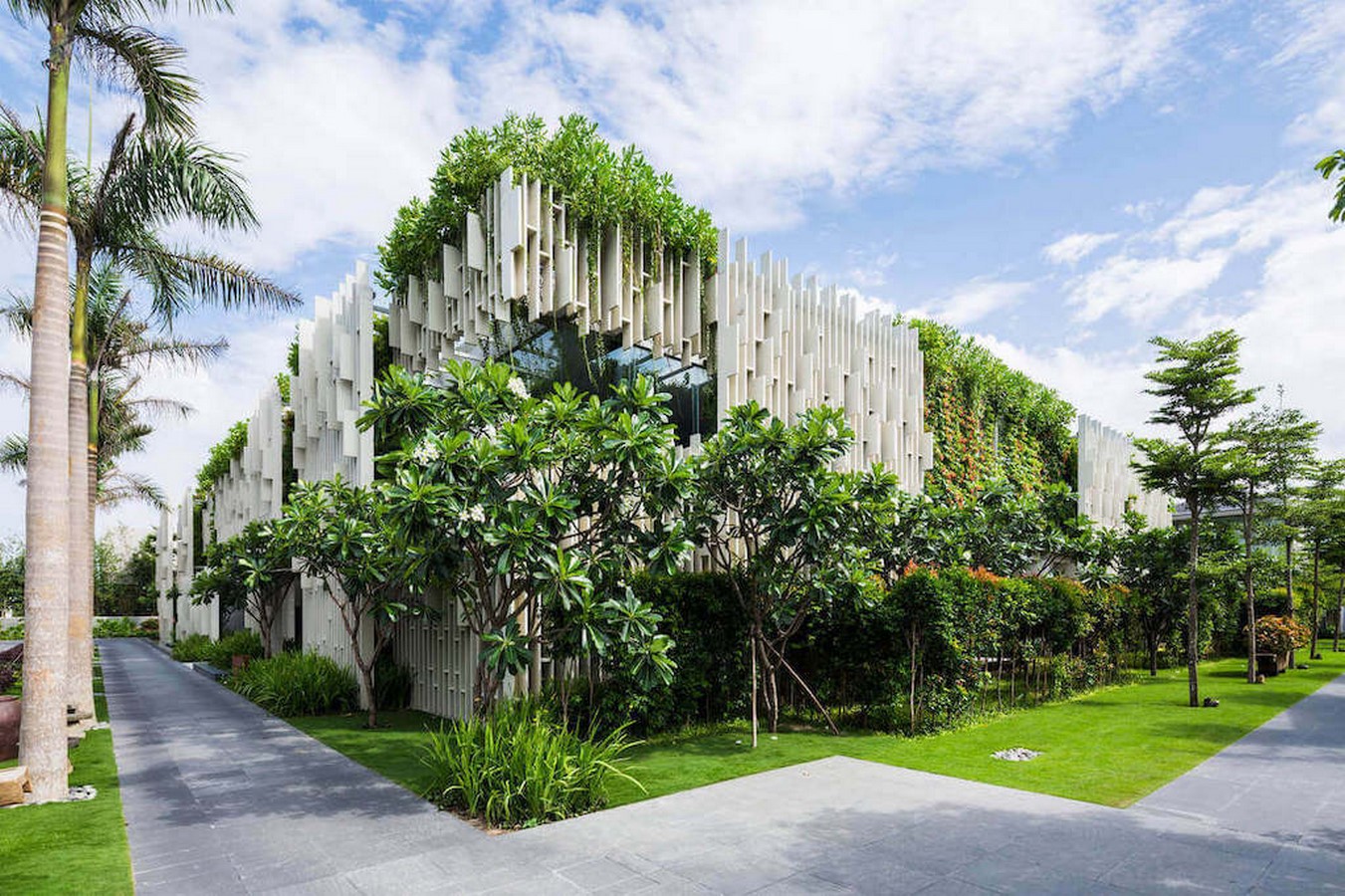
Eco-Friendly Classroom Designs
Sustainable schools prioritize eco-friendly classroom designs that enhance the learning experience while minimizing environmental impact. Large windows not only flood classrooms with natural light but also reduce the need for artificial lighting, significantly decreasing energy consumption. According to the U.S. Department of Energy, daylighting strategies can reduce lighting energy use by up to 80%. Additionally, the use of sustainable materials like bamboo, recycled carpeting, and low-VOC paints ensures that classrooms are not only energy-efficient but also healthy for students and teachers.
Renewable Energy Sources on Campus
Renewable energy sources are integral to sustainable school architecture. Solar panels on school rooftops and wind turbines on campuses harness renewable energy. This not only reduces schools’ dependence on fossil fuels but also curtails greenhouse gas emissions, making significant strides towards a carbon-neutral or carbon-positive future. Furthermore, the surplus energy generated can be fed back into the grid, contributing to local sustainability efforts and even generating revenue for schools. The incorporation of these renewable sources aligns school architecture with broader sustainability goals and sets a precedent for responsible energy consumption in the community. The National Renewable Energy Laboratory reports that solar panels can provide 20-100% of a school’s electricity needs, depending on the system’s size.
Renewable energy sources also play a vital role in educating students about the importance of clean energy and sustainability. These sources become tangible, real-life examples of the principles taught in classrooms. Students can learn about solar and wind energy production, energy conservation, and the broader implications of transitioning to renewable sources. Moreover, interactive displays and monitoring systems can provide students with real-time data on energy generation and consumption, fostering a deeper understanding of sustainable practices.
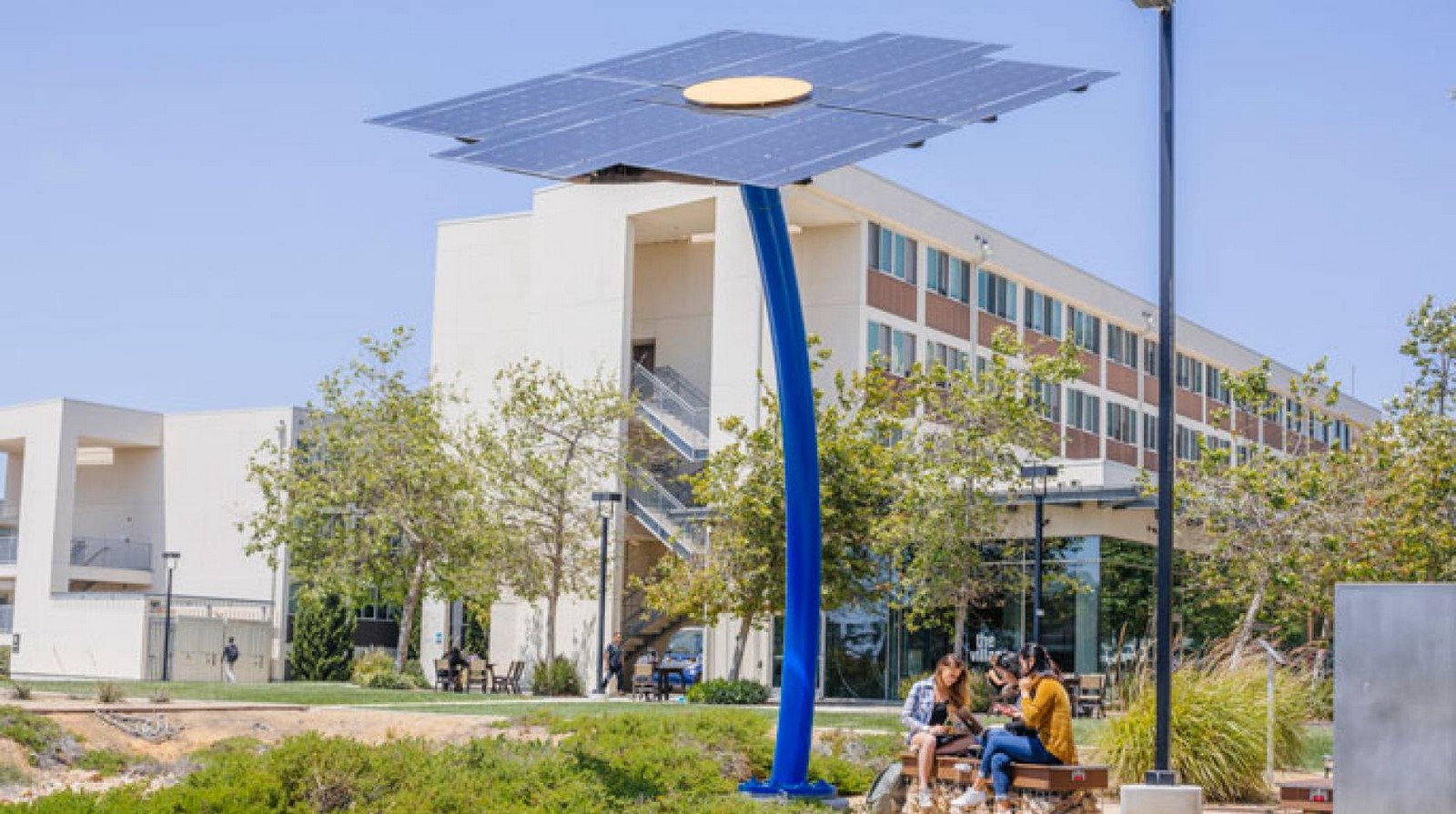
Smart Building Technologies
Sustainable schools leverage smart building technologies to optimize energy use. These technologies include occupancy sensors that adjust lighting and HVAC systems based on real-time occupancy, automated shading systems that maximize natural light, and advanced building management systems that continuously monitor and optimize energy consumption. The Environmental Protection Agency (EPA) notes that energy-efficient building systems can reduce energy consumption by 15-30%, contributing significantly to a school’s sustainability goals.
Smart building technologies also enhance the quality of the learning environment. Indoor air quality sensors can detect pollutants and automatically adjust ventilation to ensure a healthy atmosphere for students and staff. This contributes to the well-being and productivity of the school community while also reducing energy waste.
Passive Design Strategies
Passive design strategies are a cornerstone of sustainable school architecture. These strategies include well-insulated building envelopes, natural ventilation systems, and passive solar design. The American Institute of Architects (AIA) highlights that passive design can reduce heating and cooling energy needs by up to 50%. For example, the strategic placement of windows and thermal mass can capture and store heat from the sun during the day, reducing the need for artificial heating in the winter.
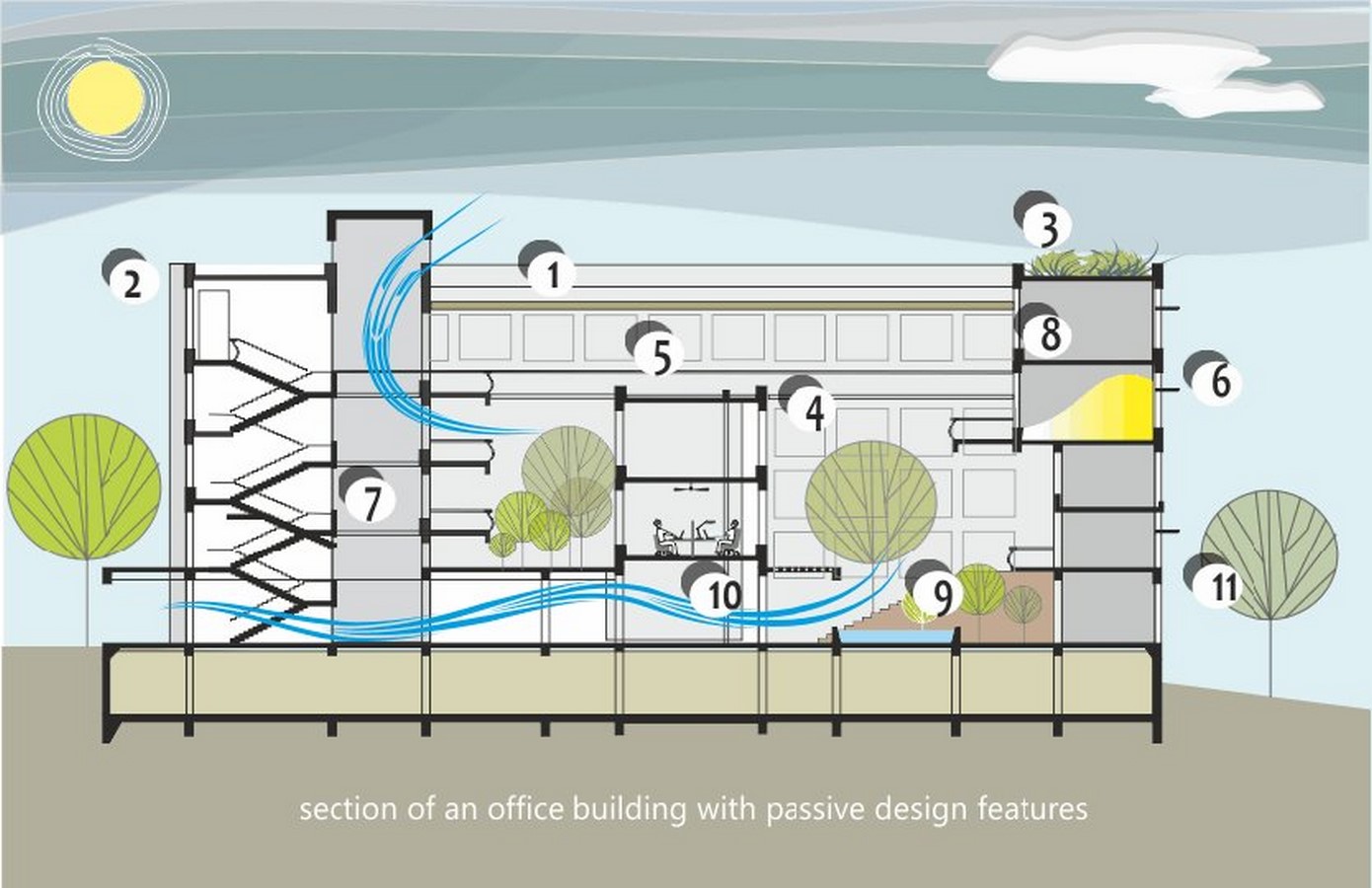
Shared Green Spaces and Community Integration
Sustainable school architecture extends its influence beyond the school’s boundaries. Green spaces extend the reach of environmental education beyond the classroom, turning schools into dynamic hubs for community engagement and ecological awareness. Shared green spaces, such as community gardens, public parks, and outdoor gathering areas, create accessible platforms for students and residents alike to connect with nature, learn about sustainable practices, and actively participate in environmental initiatives.
Shared green spaces and community integration contribute significantly to the reduction of the ecological footprint associated with school architecture.
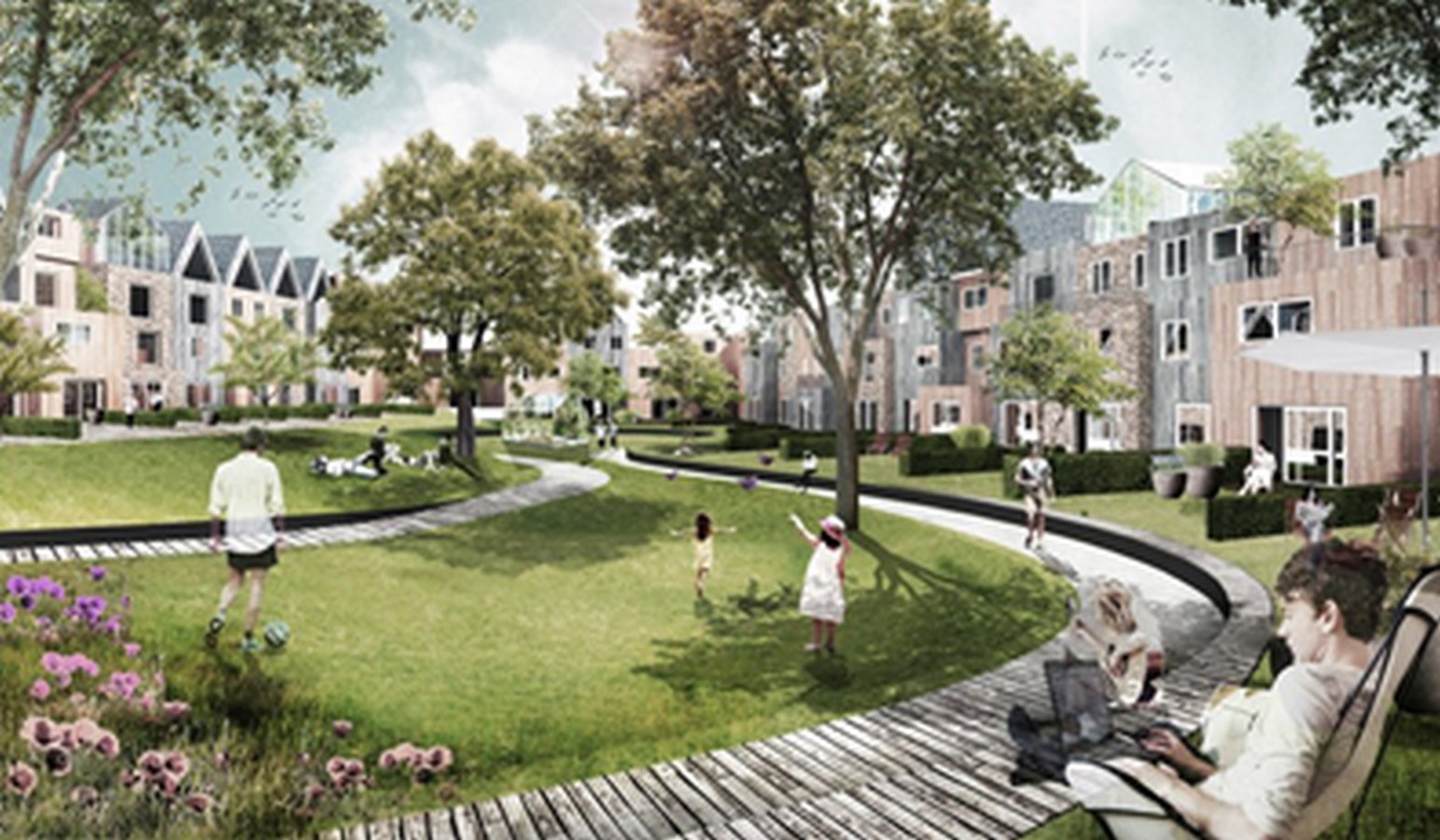
Flexible Classroom Layouts and Outdoor Learning Areas
Modern sustainable schools prioritize flexible classroom layouts that adapt to various teaching styles and needs. They create cozy reading nooks and outdoor learning areas that not only enhance the educational experience but also promote sustainability education. The National Association of Independent Schools highlights that outdoor learning can lead to better engagement and understanding of environmental issues among students. These spaces are designed to accommodate diverse learning styles, including collaborative group work, individual study, and hands-on outdoor activities.
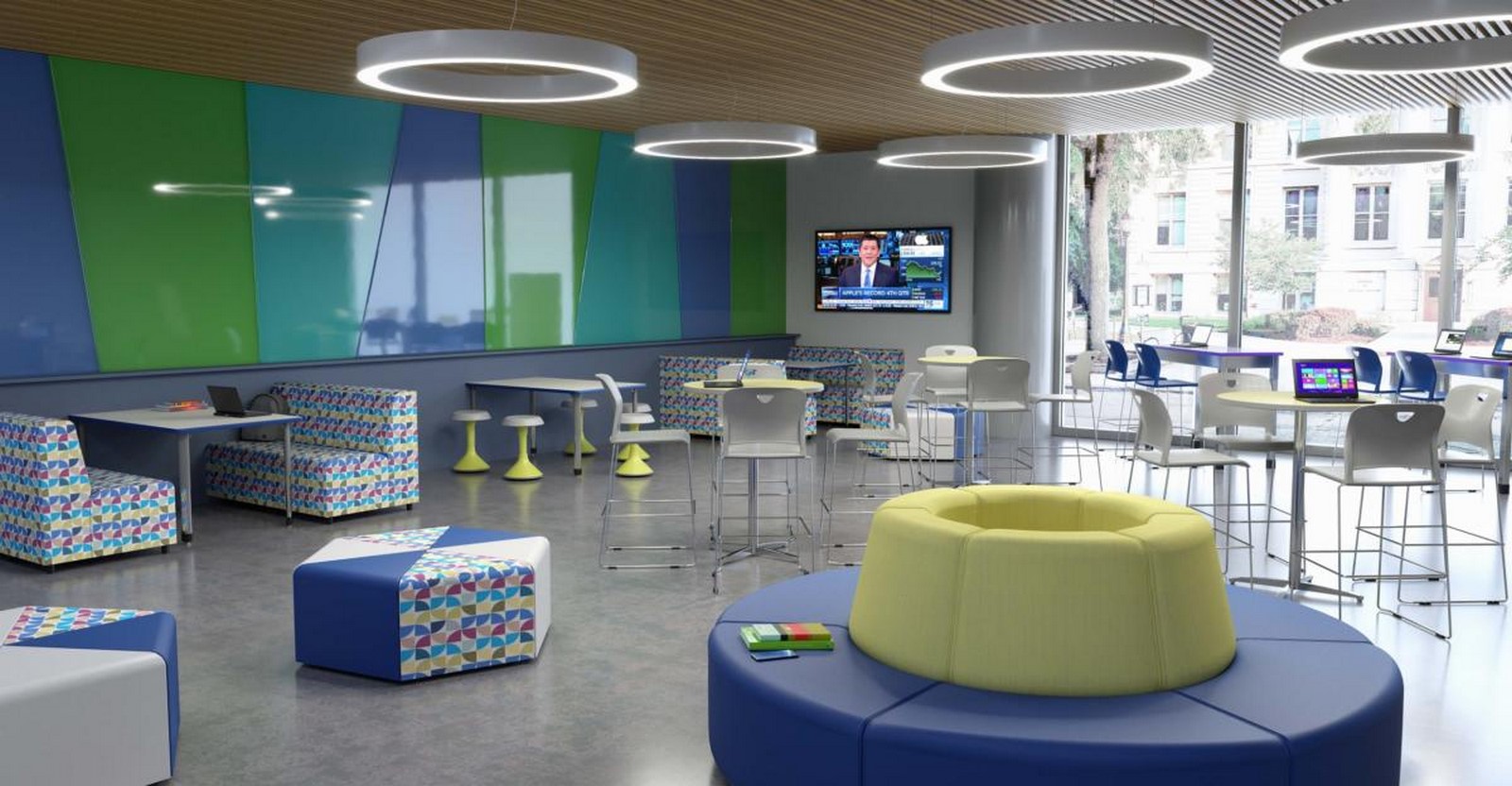
Conclusion
In the ever-evolving landscape of education, sustainable school architecture stands as a beacon of hope and innovation, addressing critical issues in great detail. “Living Learning Spaces” are not just about constructing greener buildings; they are about constructing a brighter future—one where students are not only educated but also inspired to make the world a better, more sustainable place. These innovative spaces exemplify how the integration of sustainability into education can shape not only the minds but also the hearts of the generations to come, ushering in an era where living and learning in harmony with the environment is not just a dream but a reality.
References
- www.usgbc.org. (n.d.). Center for Green Schools | U.S. Green Building Council. [online] Available at: https://www.usgbc.org/organizations/center-green-schools [Accessed 25 Sep. 2023].
- The Association for the Advancement of Sustainability in Higher Education. (n.d.). AASHE, the Association for the Advancement of Sustainability in Higher Education. [online] Available at: https://www.aashe.org/.
- Global Green. (n.d.). Global Green Schools. [online] Available at: https://globalgreen.org/global-green-schools/ [Accessed 25 Sep. 2023].

















